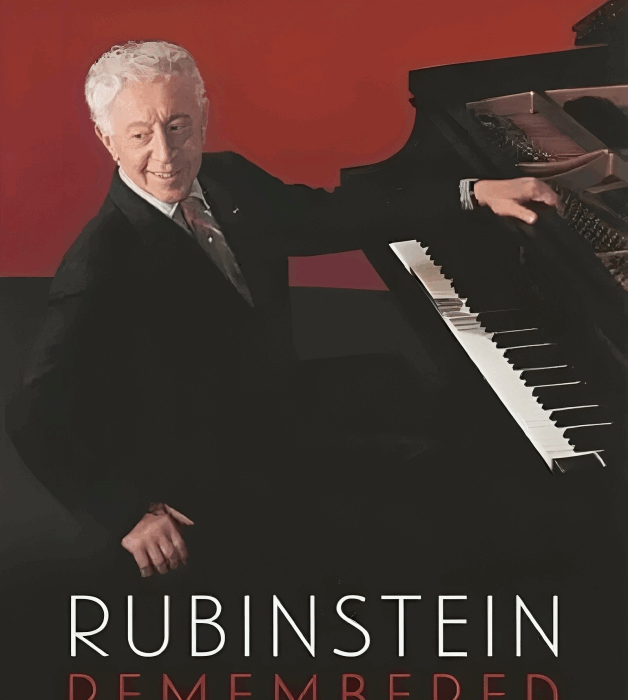
Opera Meets Film: Oil Fields as Allegory in Werner Herzog’s ‘Lessons of Darkness’
By John VandevertNothing is ever black and white, not even climate change, war, activism, politics, and art. But what can be said is that our Earth needs to be protected no matter the cost. While the number of oil spills has gone down over the decades, the amount of trash produced by China and the United States alone is staggering. On top of a slowly rising ocean level since as early as 1870, there is a lot to do to protect our irreplaceable Earth.
For this month’s Opera Meets Film, we are looking at the 1992 film “Lessons of Darkness” by Werner Herzog and Paul Berriff and specifically, its musical score. A despondent look at the outcome of desires for vengeance, brutality, and retribution, even if it means sacrificing the Earth, the film is a reminder that we are not gods and that the Earth is not a toy for us to blithely discard. Using real footage, there is not a scene which feels comfortable.
The Film’s Narrative
At the heart of the film is a decontextualized look at the ramifications of the Kuwait oil fires, one of the many terrible and life taking outcomes of the Gulf War (1990-1991). Begun as a result of the unprovoked entrance of Iraq into Kuwait, the former took over the latter and quickly established their own government. The reasons are unimportant to note here but as a result of Iraq’s illegal occupation of Kuwait, the international community rallied against Iraq with an American-led coalition forming to push Iraq out of Kuwait as quickly as possible. At the time, the Soviet Union had just fallen and thus America was both warring with the Middle East and busy setting up partnerships with newly liberated Russia. This was a time in world history which saw the complete upending of everything known, and the beginning of a completely new chapter in global history. However, every paradigm was not changing for good.
By 1991, the international community had adopted a “by any means” strategy in order to push Iraq out of Kuwait and by February, the coalition was successfully penetrating Iraqi territory. Seeing no other option for them, Iraqi forces started brutally retaliating against Israel and then land itself. A series of natural disasters were done by Iraq in order to punish Kuwait before they were pushed out including an oil spill, marsh draining, and oil fires. The latter was responsible for $157.5 billion in lost revenue, with twenty-five and fifty million barrels of oil being leaked and causing irrevocable damage to Kuwait’s environment. Abilities to put out the fires were frustrated by the sheer difficulty of the task, with the workers assigned to cleaning it up calling the mission, “Operation Desert Hell.” Deemed a scorched earth practice, Herzog’s film strips the clean up process of any discerning features, focusing on the environmental impact instead of politics. Powerful in its clarity, Herzog reminds us that we belong to one Earth.
A Heavy Beginning
The film, as an allegorical threnody, is strong enough to stand apart from its score. Yet, it is the music which gives it a visceral punch. While the drowning landscape is a haunting depiction of a raped world, the film’s musical life tells an equally haunting and existential narrative. Although only 55 minutes in length, the film pulls from the early-Romantic 19th century all the way to the late-Romantic period and beyond to the post-tonal 20th century. Sampling from some of classical music’s most profound works, the idea of great loss yet great rebirth permeates each and every musical choice. Taking the form of 13 scenes which take the viewer from “A Capital City” to “Satan’s National Park” all the way to “I am so tired of sighing; Lord, let it be night,” Herzog’s musical selections reflect the final days of the Earth, the ransacking of beauty and vitality. Most importantly, it shows the real outcome of our greed, anger, and envy against our fellow man, and our desire to play God. Thus, each musical selection reflects this overarching goal of questioning the idea of progress by asking the question, “Progress for whom?” By setting everything on fire, by razing everything to the ground, can life start again? If we destroy, how can we build from the ashes?
As the film opens, we fly over modern Kuwait, away from the putrid oil fields, and all the way to the trash-laden deserts, where we are greeted by the dramatic dawning of Wagner’s overture to Das Rheingold. The first opera in his “Ring Cycle” tells the story of how the Norse Gods came to fight over a golden ring whose powers were beyond their understanding, even as Gods. The overture acts as a prelude, warning its viewers about the perils that come with the temptations of lust, greed, and selfishness. A humorous forecast of the coming disasters are seen in the inferno scene and right before a transition, echoing both the eventual downfall of Valhalla, the kingdom of the Gods, and the destruction of Earth and its precious resources. Quickly, the film transitions into its second musical selection, Edvard Grieg’s “Peer Gynt” Suite No. 1, specifically “Death of Aase.” Used during scenes “The Capital” and “The War,” the dirge-like music paints an intensely sorrowful picture of Peer’s reality and the ruin which war causes. At this point, Peer spoiled his chance at love due to his juvenile behavior and was forced to take refuge in the forest as a result of his lustful pursuits and consequences. Miraculously, the woman came to him, yet he found a way to squander this too by running after she’d gotten pregnant. Now, he returns home to find his mother dying.
The film continues with the scene, “After the Battle,” but now Wagner’s overture to his last opera “Parsifal” can be heard. A stark 360 from the film’s beginning, we are now greeted with a decimated landscape, replete with charred bones, smoke, and ash. But as Wagner’s opera shows, from death comes new life. From suffering blooms a renewal of hope. As the camera pans over the browned oil rigs and metal infrastructure, Wagner’s orchestral fanfare and sublime swells of instrumental breath promise something shall come from such destruction. The opera is a religio-spiritual analogy of man’s innate desire to alleviate suffering but the need for greater wisdom to see the futility of loving life yet fearing death. The greatest compassion one can give is the awareness of the impermanence of all things and the need to treat everything with compassion now, not later. The film then proceeds with “Finds from Torture Chambers,” where visuals of burnt remains and interview footage are accompanied by Prokofiev’s Sonata for Two Violins. Inspired by a bad performance of two violins playing unaccompanied, Prokofiev’s unembellished opening movement is a reminder of just how alarming beauty can be in the hands of evil.
And Then a Drastic Turn
It is in the second half where the film becomes “alive” with the sounds and sights of Earth’s raped lands. In other words, the oil fields with their spires of smoke and flame. As we are introduced to “Satan’s National Park” with their blackened sky and desert, Arvo Pärt’s Stabat Mater hangs in the atmosphere. A 13th-century ode to Mary who sits at the foot of Jesus Christ, Herzog practically begs for forgiveness at the sight of mankind bleeding the Earth of its resources without remorse, without guilt, without humility. But it only gets worse, as following an interview with a mother and child, we are greeted to the plumes of repugnant, tarry plumes of black smoke which choke sentient life all the while Siegfried’s death and Funeral march from the Cycle’s final opera, Götterdämmerung, chastises us for our negligence. Just as foretold within Das Rheingold, the destruction of one mortal led to the destruction of Gods. Thus, while the camera pans over seemingly endless fields of burning oil, we are obligated to remember that humans are not gods, no matter how we may think nor is the Earth and its gifts endless. As the film gets worse, we see the liquid gold humankind is clamoring over, which wars are fought over, all accompanied by Verdi’s Recordare from his Messa de Requiem. An antithesis to Mozart and Faure, the pits of oil can never be forgiven or forgotten.
In the film’s last ten minutes, Herzog manages to squeeze in two more odes. As a new pump is installed among the pits of oil and soot, Schubert’s piano trio Notturno is heard. The work’s musicality sits in contrast to the mundanity of the oily bolts. Schubert’s piano trios were written later in his life and reflect a sagacity which only comes through an unencumbered sense of life without the covering of artificiality or superficial affect. While the men of the oil fields live in their slime-covered world, Herzog’s films question their feeling of achievement. Soon, the film’s closing comes into view, and the last two scenes, “Life Without the Fire” and “I am so tired of sighing; Lord, let it be night” seek to showcase the ignorance of mankind once and for all. A tower of gas is ignited by a callous man but what is revealed is worse. As the camera zooms out, we see the plumes of black smoke, the fire stacks, the lifeless black earth. It’s enough to make you cry but Herzog’s music, Mahler’s Resurrection Symphony (No.2), specifically the mezzo-soprano solo “Urlicht,” begs the question, “Do we deserve redemption?” The premise of the symphony is the absolution of the human race and the regeneration of hope from despair. The song, from ‘Des Knaben Wunderhorn,’ speaks to the hope which comes from knowing one’s Godly origins. But the film ends with shots of pitch-black smoke and fire towers. All we can do is pray God forgives us in the end for our many, many sins.
So What?
Perhaps the de/recontextualized usage of Wagner, Verdi, Mahler, and others doesn’t really matter because it’s just beautiful music? Perhaps the film is just a bias piece of cinema that doesn’t accurately portray the issue at hand? What this film shows, however, is that it matters because nothing is just one thing or the other. Each of Wagner’s operas, Mahler’s symphonies, every requiem ever written, comes from a deep longing to say something. Wagner’s Ring Cycle desires to show us that we are fickle and should not think of ourselves as untouchable, while Mahler argues that we are still able to find redemption if we only look for it. The film expresses this. It is not too late to make change but the time is quickly passing. As the earth burns, we must reflect upon our choices and save ourselves before it’s far too late. The film’s music expresses this two-fold reality. We are still worthy of resurrection.


